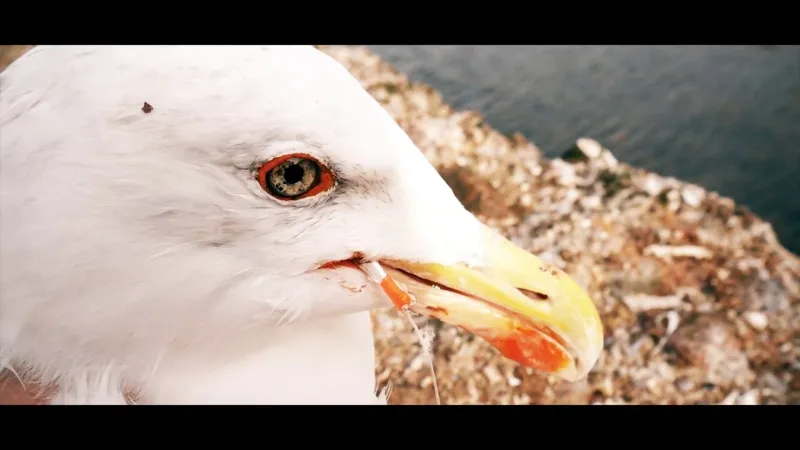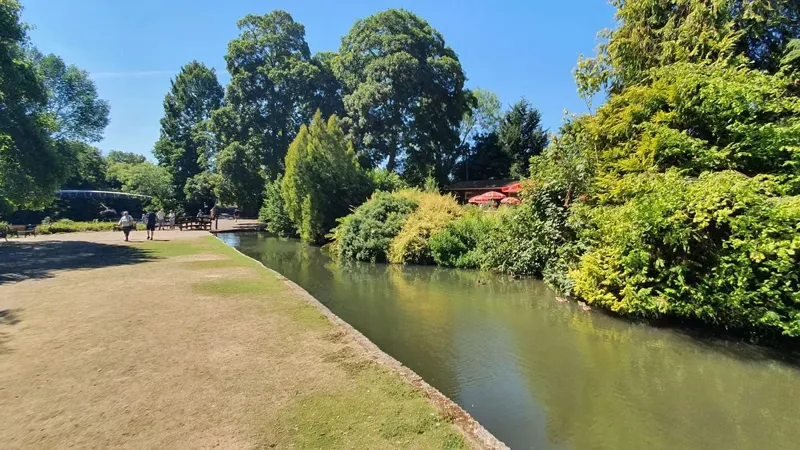In a heartwarming tale of resilience and adventure, a seagull named Gulliver has captured the attention of wildlife enthusiasts after a remarkable journey from Scotland to Morocco. Rescued from a bin in Paisley by the Scottish Society for the Prevention of Cruelty to Animals, Gulliver was nursed back to health at a wildlife charity in Alloa. Nearly 200 days later, he was spotted sunbathing on a beach in Agadir, Morocco, a staggering distance of almost 3,000 kilometers from where his harrowing story began. This incredible transformation not only showcases the dedication of wildlife rehabilitation efforts but also highlights the adventurous spirit of nature.
| Attribute | Details |
|---|---|
| Seagull’s Name | Gulliver |
The Amazing Journey of Gulliver
Gulliver’s adventure is truly remarkable! This Lesser Black-Backed Gull started his journey in a small town called Paisley, Scotland. After being rescued from a bin by the Scottish SPCA, he was taken to a wildlife charity where he was cared for and rehabilitated. He transformed from a trapped bird into a strong, free seagull ready to explore the world. This shows how important it is to help animals in need, so they can have a second chance at life.
Once Gulliver was released back into the wild, he didn’t just stay close to home. Instead, he flew all the way to Morocco, nearly 3,000 kilometers away! This incredible journey highlights the adventurous spirit of seagulls. Many birds migrate long distances in search of food and warmer weather. Gulliver’s story reminds us that birds can travel far and wide, making their journeys even more fascinating.
Rescue and Rehabilitation Process
When Gulliver was rescued from the bin, he needed help to recover. The Scottish SPCA worked hard to ensure that he received the care he needed. At the wildlife charity rescue center in Alloa, Gulliver was given food, shelter, and medical attention. This rehabilitation process is crucial for injured or distressed animals. It allows them to regain their strength and prepare for life in the wild again.
Gulliver’s rehabilitation involved careful monitoring by the staff. They made sure he was healthy enough to fly again. This process took time and patience, as every animal has different needs. The team at the rescue center celebrated when Gulliver finally showed signs of improvement. They knew he was ready to take on the world again, demonstrating the dedication and love that goes into caring for wildlife.
The Role of Wildlife Charities
Wildlife charities play a big role in helping animals like Gulliver. These organizations focus on rescuing and rehabilitating animals that are hurt or in danger. They work hard to provide safe environments where wildlife can heal. By supporting wildlife charities, people can help ensure that more animals receive the care they need. Every small donation or act of kindness can make a huge difference in the lives of these creatures.
In addition to rescue efforts, wildlife charities also educate the public about the importance of protecting animals and their habitats. They teach us how to avoid littering and harming wildlife, which can help prevent situations like Gulliver’s. By spreading awareness, these charities encourage everyone to take action to protect our environment. The more we learn about wildlife, the better we can help them thrive.
Seagulls and Their Migration Patterns
Seagulls are fascinating birds known for their adaptability and migration patterns. Most seagulls migrate in search of warmer climates during the colder months. This instinct to travel helps them find food and suitable nesting sites. Gulliver’s journey to Morocco is a perfect example of this natural behavior. Many species of seagulls can fly great distances, showing their resilience and ability to survive in different environments.
During migration, seagulls often travel in groups, which can be both a social and protective strategy. They follow specific routes, sometimes returning to the same places year after year. This pattern helps them find the best feeding areas and safer environments. Understanding seagulls and their migration habits allows us to appreciate these incredible birds and the challenges they face in nature.
The Impact of Climate on Seagulls
Climate plays a significant role in the lives of seagulls and their migration. Changes in weather patterns can affect the availability of food and safe nesting sites. For example, warming temperatures can lead to earlier springs, prompting seagulls to migrate sooner. Understanding these changes helps scientists study how seagulls adapt to their environment and the challenges they encounter.
Additionally, climate change can pose threats to seagull populations. Rising sea levels and extreme weather can disrupt their habitats, making survival more difficult. By learning about these impacts, we can find ways to protect seagulls and other wildlife. Taking care of our planet is crucial for ensuring that birds like Gulliver continue to thrive in the wild.
Celebrating Successful Wildlife Rescues
Every successful wildlife rescue is a reason to celebrate! Gulliver’s story is one of hope and determination, showing how teamwork can lead to positive outcomes. When people come together to help animals in distress, they create a ripple effect of kindness in the community. Celebrating these successes encourages others to get involved and support wildlife rescue efforts, making a difference in the lives of many animals.
In addition to celebrating individual stories, it’s important to recognize the hard work of volunteers and organizations. Their dedication to rescuing and rehabilitating animals often goes unnoticed. By sharing success stories like Gulliver’s, we inspire others to appreciate wildlife and contribute to conservation efforts. Together, we can protect animals and ensure they have the chance to thrive in their natural habitats.
Frequently Asked Questions
What happened to the seagull in Scotland?
A seagull named Gulliver was rescued from a bin in Paisley, Scotland, by the SPCA after being trapped inside.
How did Gulliver get to Morocco?
After being rehabilitated in Scotland, Gulliver traveled nearly 3,000 kilometers and was spotted on a beach in Agadir, Morocco.
What kind of seagull is Gulliver?
Gulliver is a Lesser Black-Backed Gull, a species known for its adaptability and migration patterns.
How long was Gulliver in rehabilitation?
Gulliver was rehabilitated for nearly 200 days before being released back into the wild.
Who reported Gulliver’s sighting in Morocco?
A birdwatcher spotted Gulliver basking on the beach in Agadir, Morocco, leading to the news of his remarkable journey.
What condition was Gulliver in when rescued?
When rescued, Gulliver was in a disheveled state and weighed less than 645 grams, indicating he needed care.
Why do seagulls migrate to warmer climates?
Seagulls migrate to warmer climates, like Morocco, in search of better food sources and ideal weather conditions.
Summary
A seagull named Gulliver, rescued from a bin in Paisley, Scotland, has been spotted on a beach in Agadir, Morocco, nearly 3,000 kilometers away. The Scottish Society for the Prevention of Cruelty to Animals (SPCA) saved Gulliver when he was trapped and in poor condition. After rehabilitation at a wildlife charity in Alloa, he was released back into the wild. Birdwatchers found him enjoying the sun in Morocco, showcasing his remarkable journey. This story highlights the resilience of wildlife and the importance of rescue efforts for animals in need.



